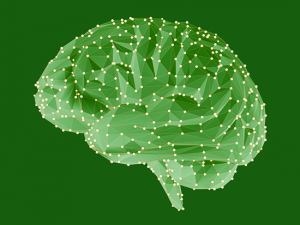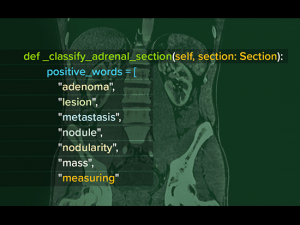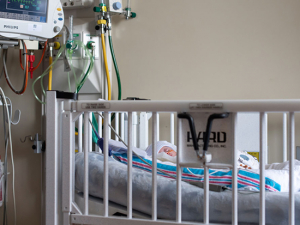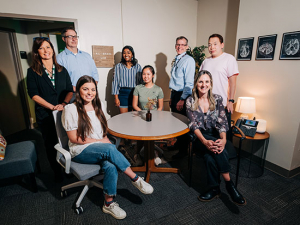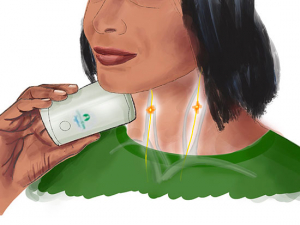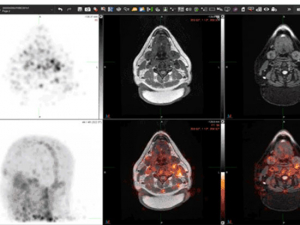In fiscal year 2019, UAB researchers received a record $602 million in grants and contracts, marking a second year of double-digit percentage growth in funding. That productivity has carried on unabated in 2020, and you can follow along. Every Tuesday, Research Administration releases a list of the grants and contracts awarded the previous week (BlazerID required).
In this new series, we’re spotlighting new or re-funded projects to offer a window into the groundbreaking, lifesaving work done by our colleagues around campus. (See other stories in this series, profiling grants to accelerate HIV suppression, test a new strategy against lupus, stop online opioid sales and build freezers for the International Space Station.)
This week, we’re taking a look at a study of racial and socioeconomic differences in chronic low back pain.
Project title: Examining Racial and SocioEconomic Disparities in Chronic Low Back Pain (ERASED)
Principal investigator: Burel Goodin, Ph.D., associate professor, Department of Psychology; collaborators: Robert Sorge, Ph.D. (Psychology), Timothy Ness, M.D., Ph.D. (Division of Anesthesiology, School of Medicine), D. Leann Long, Ph.D. (Department of Biostatistics, School of Public Health), Edwin Aroke, Ph.D. (Department of Acute, Chronic and Continuing Care, School of Nursing)
Funding: Five years, $2,228,143 from the National Institute of Minority Health and Health Disparities
 Low back pain is a near-universal complaint. It affects up to 80% of adults at some point, according to the National Institute of Neurological Disorders and Stroke, and is the most common cause of job-related disability. The burden has grown over time. A 1990 study ranked low back pain as the sixth most problematic condition in the United States in terms of mortality or poor health; by 2010, it jumped to third place, ranking only behind ischemic heart disease and chronic obstructive pulmonary disease. According to this paper in the British medical journal The Lancet, low back pain is the leading cause of disability worldwide — even though for “nearly all” patients, the authors write, “it is not possible to identify a specific… cause.”
Low back pain is a near-universal complaint. It affects up to 80% of adults at some point, according to the National Institute of Neurological Disorders and Stroke, and is the most common cause of job-related disability. The burden has grown over time. A 1990 study ranked low back pain as the sixth most problematic condition in the United States in terms of mortality or poor health; by 2010, it jumped to third place, ranking only behind ischemic heart disease and chronic obstructive pulmonary disease. According to this paper in the British medical journal The Lancet, low back pain is the leading cause of disability worldwide — even though for “nearly all” patients, the authors write, “it is not possible to identify a specific… cause.”
Chronic low back pain does not affect everyone equally. “There is evidence to suggest that low back pain affects women more often than men,” said Associate Professor Burel Goodin, Ph.D., pointing to this 2016 study. Other research shows that certain disadvantaged groups, including racial minorities and people with lower socioeconomic status, are at higher risk for poor outcomes with chronic back pain, he noted. Goodin is principal investigator of the ERASED study, which aims to dig deeper into the causes. “The goal of the study is to better understand why racial minorities and people with low socioeconomic status tend to have worse chronic low back pain outcomes when compared to racial majority and high socioeconomic status, respectively,” Goodin said.
Participants are being evaluated across multiple measures, including blood draws to measure levels of vitamin D, C-reactive protein (a marker of inflammation) and the feel-good hormone oxytocin; questionnaires assessing health literacy, pain self-assessment and use of coping strategies; and a sleep assessment. They also visit Goodin’s Biobehavioral Pain Research Laboratory for quantitative sensory testing using devices to create painful heat, cold and mechanical pressure.
(Goodin offers a tour of his lab, and a hands-on demonstration of the devices he uses, in this 2014 video from UAB Magazine below.)
The ERASED study, now in its fourth year (it received funding of $573,506 for 2020 in January), includes a number of faculty collaborators — listed above — along with “a small army of grad students, undergrad students and a project coordinator,” Goodin said.
